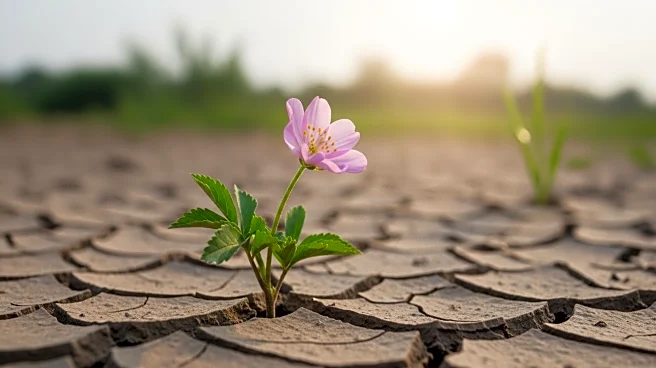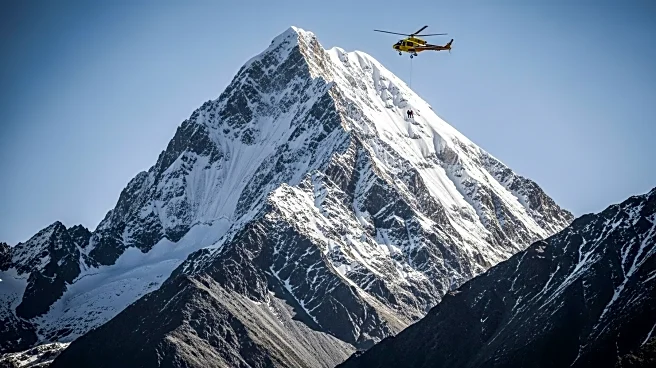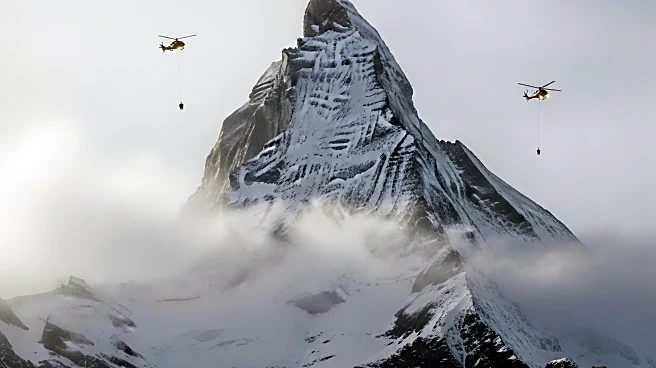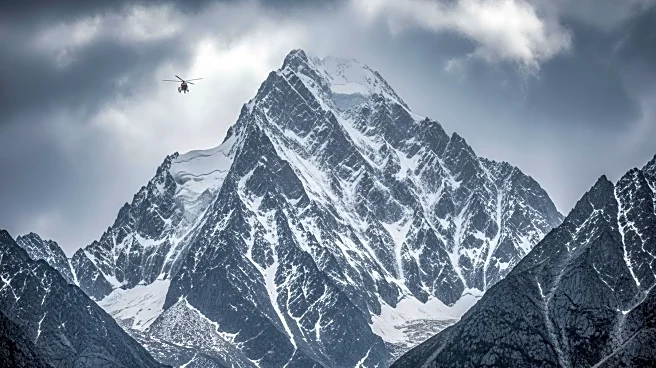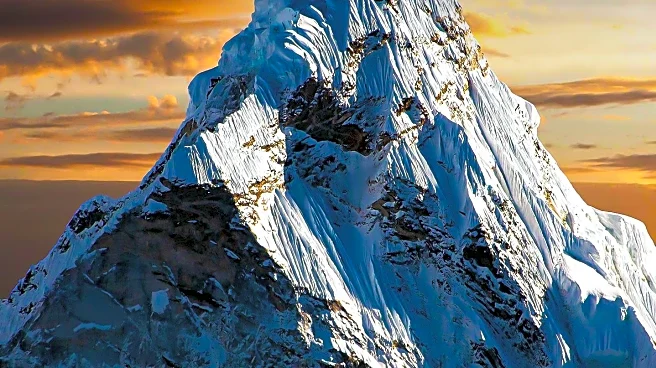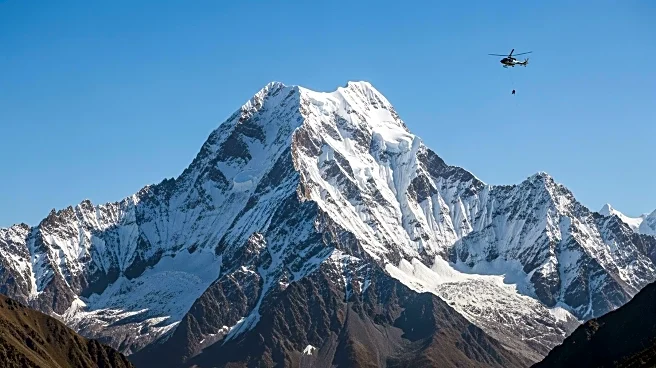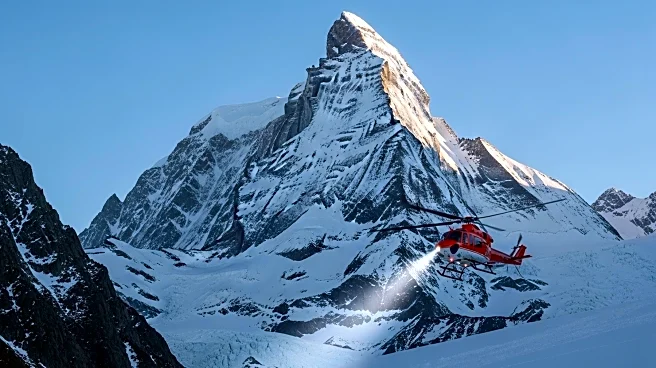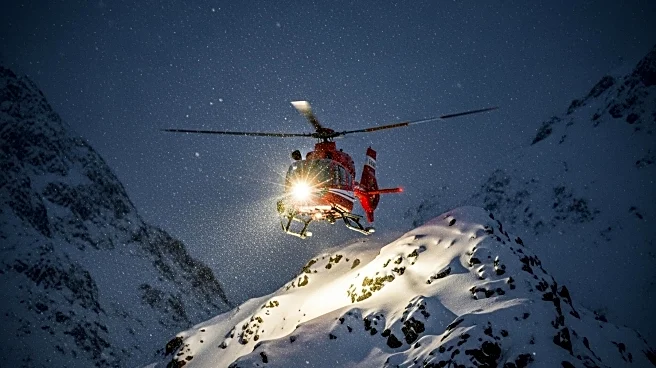What's Happening?
A significant rescue operation was conducted on Mount Everest after a severe snowstorm left hundreds of hikers and their guides stranded. According to Chinese state media, approximately 580 hikers, along with over 300 local guides, yak handlers, and support staff, were rescued from the lower slopes of the mountain. The snowstorm rendered parts of Mount Everest impassable, prompting a multi-day rescue effort involving search and rescue teams equipped with horses and drones. Villagers also contributed to the rescue efforts using oxen and horses. The hikers were trapped at an elevation of around 16,400 feet, primarily at tourist campsites. The summit of Mount Everest stands at approximately 29,000 feet. Notably, the Nepalese side of the mountain reported no climbers or tourists trapped due to the weather conditions.
Why It's Important?
The rescue operation highlights the challenges and risks associated with climbing Mount Everest, particularly during adverse weather conditions. The incident underscores the importance of preparedness and the need for effective rescue operations in high-altitude environments. The increasing popularity of Mount Everest as a tourist destination has led to concerns about overcrowding and safety, prompting discussions about restricting climbing permits to more experienced hikers. This event may influence future policies regarding mountain tourism and safety regulations. The successful rescue of the hikers also demonstrates the capability and coordination of rescue teams in responding to emergencies in remote and challenging terrains.
What's Next?
In the aftermath of the rescue, there may be increased scrutiny on the management of tourist activities on Mount Everest, particularly during peak holiday periods. Authorities might consider implementing stricter regulations and safety measures to prevent similar incidents in the future. The incident could also lead to a reevaluation of the resources and strategies used in high-altitude rescue operations. Additionally, there may be discussions on the environmental impact of increased tourism in the region and the need for sustainable practices to preserve the natural landscape.

